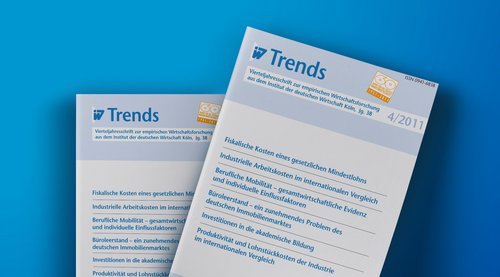In 2010, average hourly labor costs in the West German industry amounted to 36.28 euro. This was 25 percent above the average of the countries compared excluding the new member countries of the EU and other emerging countries. Only in some small countries – Norway, Switzerland, Belgium, Sweden and Denmark – labor costs were still higher. In spite of this, favorable exchange rates in the second half of the 1990s and improved cost discipline in the new millennium have reduced Germany’s cost disadvantage considerably since 1995, especially in comparison with the other EU countries. The gap between labor costs in West and East Germany hovers at 40 percent because the growth rate of labor costs in East Germany was only 0.2 percentage points higher than the West German rate over the past decade.

International Comparison of Labor Costs in Manufacturing

More on the topic

The 9th IW Survey of Further Training
In 2016 some 85 per cent of companies in Germany were active in continuing vocational training, using a broad mix of methods.
IW
Has the German Economy Reached its Limit?: Skilled Labour Shortages as a Brake on Growth
The German economy is performing significantly better than was expected in the first few months of this year. During the course of 2017, certain early fears – especially of a weakening of the global economy due to increasing protectionism – have proved ...
IW